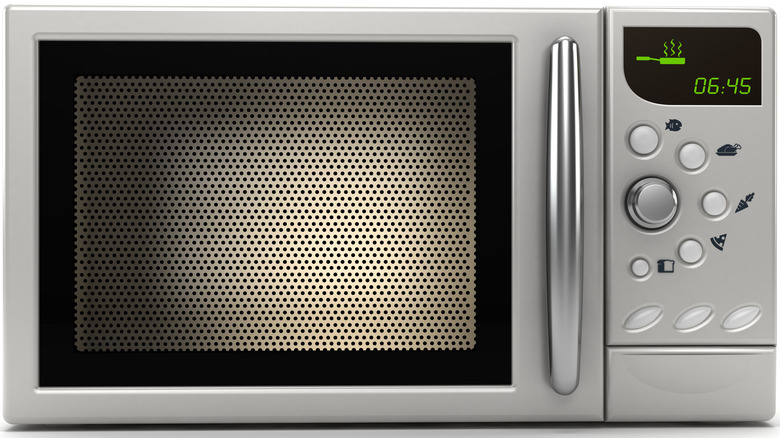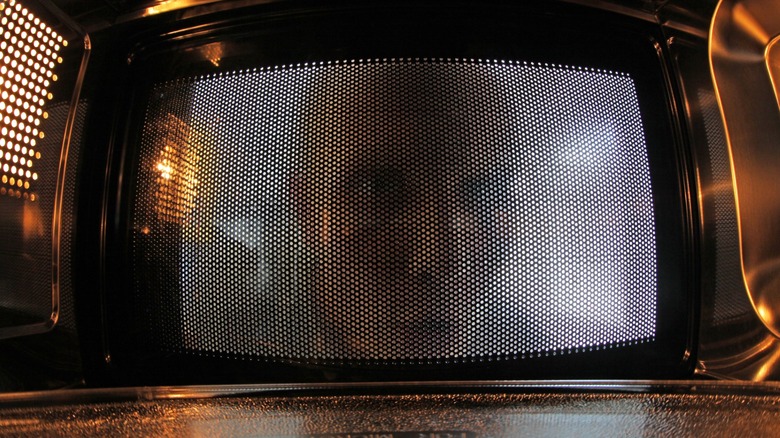What's That Mesh On The Inside Of Your Microwave And What Does It Do?
Since their introduction in 1967, microwave ovens have become an essential appliance in kitchens both commercial and residential. These devices produce a type of electromagnetic radiation known as microwaves, which are a type of electromagnetic wave. To protect consumers from the dangers of this type of radiation, microwave ovens are manufactured to prevent it from escaping. The embedded mesh screen in the door of the appliance is just one of these safety features.
Microwaves are a form of non-ionizing radiation — which also includes radio waves and visible light — so they don't cause cancer or modify atoms and molecules like the ionizing radiation that comes from X-rays. However, exposure to high levels of radiation can cause burns and heat body tissue just like it heats food. For consumer safety, manufacturers embed a mesh — also called a choke or Faraday cage (invented by Michael Faraday) — into the windowed doors of microwave ovens.
The screen is designed with holes that are the perfect size to keep microwaves, which have a wavelength of 4.8 inches, inside of the device while it's running. Since visible light has a much smaller wavelength of 390 to 700 nanometers, it can pass through the holes, allowing you to see inside of the device when you turn it on. The mesh is also made of metal, which reflects the microwaves back inside of the oven. That's why metal materials can't be put inside microwave ovens: The waves bounce off those materials, potentially causing damage to the appliance and unevenly heating food.
Additional safety features and standards for microwaves
The metal mesh embedded in the door windows of microwave ovens isn't the only safety feature. In fact, there's a thick plastic sheet glued over the top of the screen to prevent anything from interfering with it. And, since these devices are a common source of microwaves, the FDA's Center for Devices and Radiological Health oversees performance standards to prevent radiation from posing a public health hazard. One of these standards limits the power density to a radiation emission of 1 milliwatt per square centimeter at 5 centimeters or more from the outside of the appliances. This prevents the microwave from burning you if you get too close.
Another FDA requirement is that microwave ovens have at least two independent safety interlock systems. While the primary safety interlock must comply with the radiation emission limited by the power density, the secondary safety interlock has to limit the radiation emission (a characteristic of radioactive elements) to 5 milliwatts per square centimeter. The appliances are required to have a label showing that they meet these and other safety standards, and precautions for use must be included. Plus, the FDA assesses the testing and quality control programs at manufacturer facilities, as well as tests the products in its own laboratory to enforce its performance standards. In other words, you don't have to worry about your microwave accidentally cooking you.

